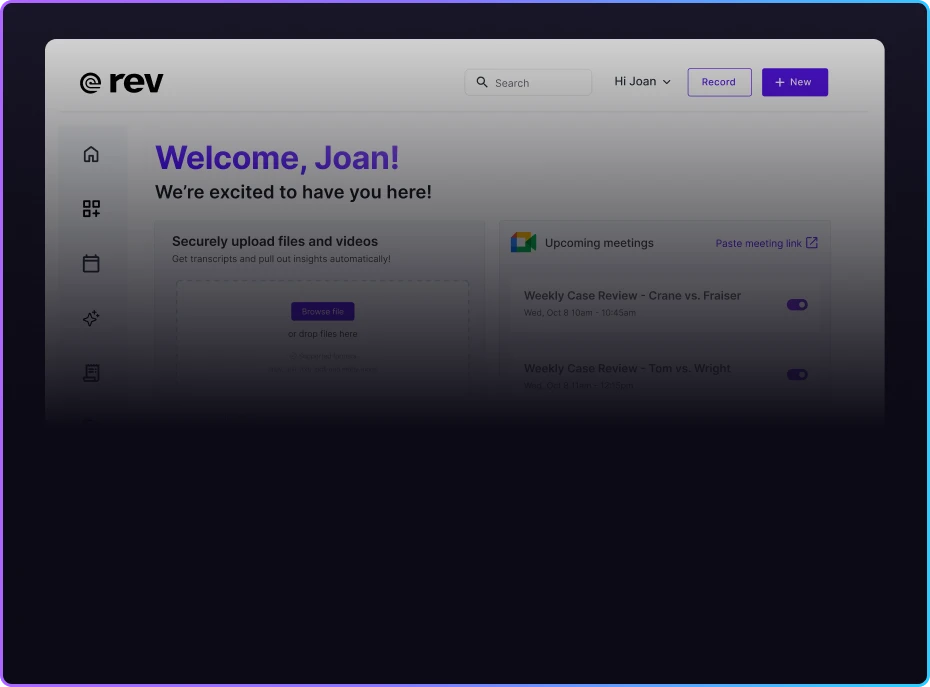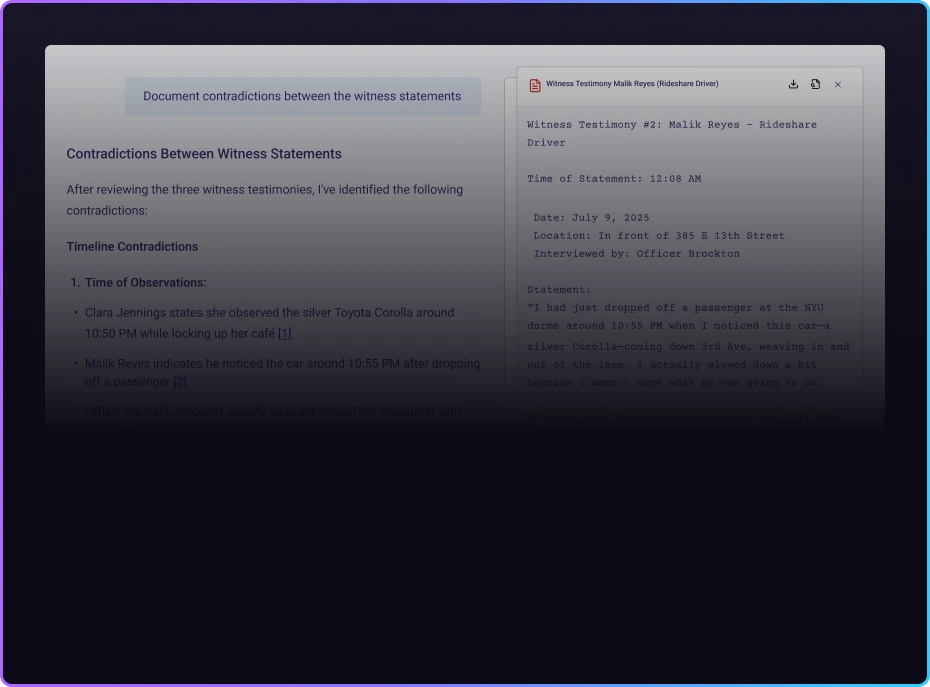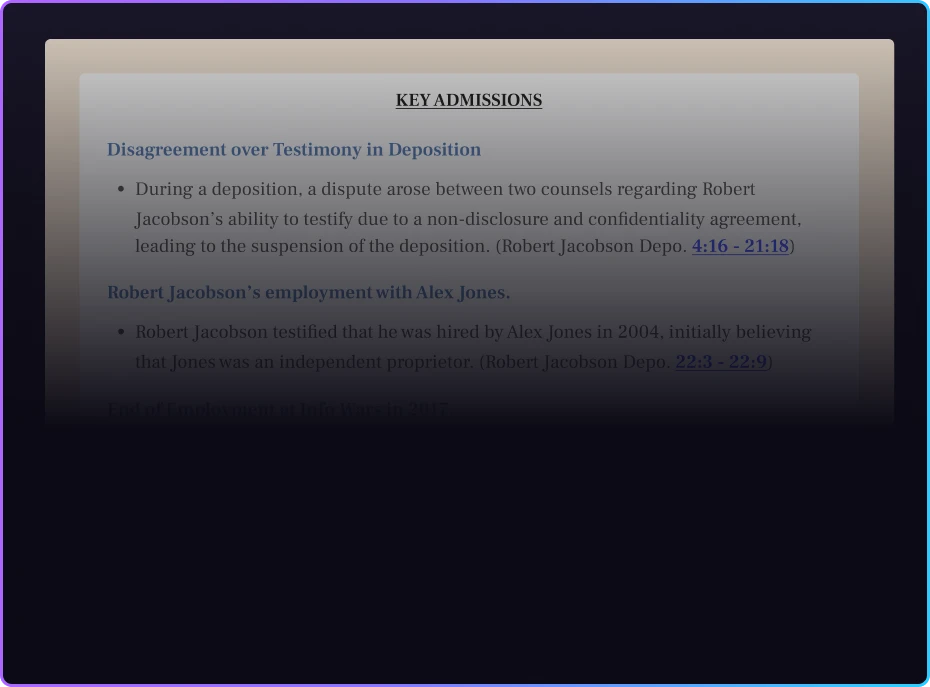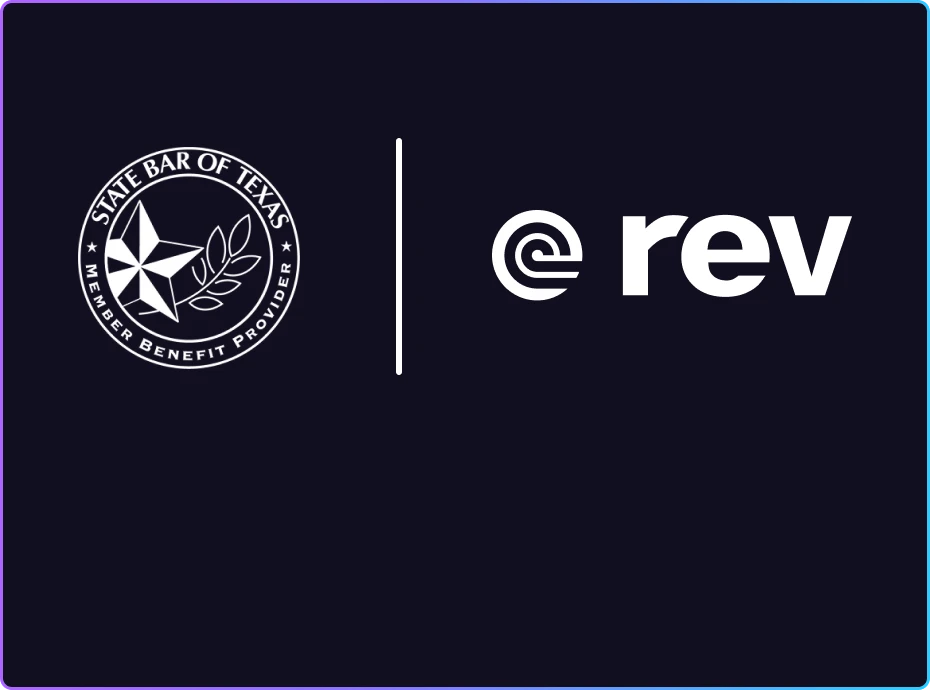What is an SRT File?
An SRT file (which stands for SubRip file, and is also known as an .srt) is one of the most common types of formats used to create closed captions and subtitles. SubRip subtitle files essentially make video content more accessible and engaging, turning important audio and on-screen information into plain text that can be displayed during playback.
If you’ve ever watched a video with the sound off or turned on closed captions on family movie night for someone who is hearing impaired, you’ve seen SRT files work their magic. As video becomes the norm for online and social content, this format has become increasingly relevant.
Keep reading to learn more about the SRT file format, how to make one of these files, and how to add SRT captions to your videos.
What Does an SRT File Look Like?
In its raw form, an SRT file looks like plain text. These can be created automatically by companies like Rev, which will turn your uploaded video into a plain text format that you can use for captions and subtitles, but you can make them yourself if you really want to. You can format your SRT files using HTML tags. For example, to make a word appear in italics, you’d tag it with “<i>…</i> or {i}…{/i} on either side of the word, phrase, or sentence.
An SRT file contains the following info for each individual line of a subtitle or caption:
- A number showing which position, in order, the subtitle appears in the video
- The timestamp of the subtitle, with the start and end time separated by a “-–>”. A typical timestamp is structured to include hours, minutes, seconds, and milliseconds, in that specific order.
- The actual subtitle text. Captions and subtitles should be limited to 38 to 42 characters per line.
- For subtitles with multiple lines of dialogue happening simultaneously, you may need to add speaker IDs, which can cut into a character count.
- Sound effects and music cues should be indicated with brackets or parentheses: [knock] or [Jack Black’s “Steve’s Lava Chicken”]
- A blank line between the end of the current subtitle and the start of the next
Here’s an example of an SRT file:

Though it looks kind of complicated, the file simply needs to specify the subtitle content, when it should appear, and when it should disappear from the video. Most video platforms like Netflix, TikTok, and Hulu have different rules for captioning and subtitling, so be sure to check with your specific destination platform’s guidelines.
Why Do You Need an SRT File?
You need an SRT file so that everyone can engage with your video content.
SRT captions and subtitles are vital in helping people with hearing impairments, viewers who don’t understand the native language, or anyone who simply can’t use the audio track enjoy movies and social content. If you’ve ever watched an Instagram video in a public place with the sound off, you’ve benefited from an SRT file.
Perhaps more importantly, you might be legally obligated to provide closed captions on your content. The FCC requires available subtitles for programs shown on television, as well as content that has been repackaged for the internet.
How to Create an SRT File With Rev
While you can create SRT files from scratch, using an accurate and reliable transcription platform like Rev’s AI-powered or human-generated captioning services guarantees quick and accurate SRT subtitles and captions for your videos.
Rev’s AI and human SRT services are able to work with a variety of video production platforms and file formats. Here’s how to create an SRT file from a video with Rev.
Step One: Upload Your Videos
First, log into your Rev account to upload your video files. You can upload a video directly from your computer, link to a URL of an online video that’s already live, or link Rev directly to your YouTube or Vimeo account.
We accept all common digital video formats, including:
- MOV
- AVI
- MP4
- VOB
- OGG
Step Two: Select Your File Format
Once you’ve logged in and uploaded a video or URL, select “SubRip (.srt)” from the “Output File Formats” dropdown list. You can select as many file formats as you need, including a Transcript (.txt), WebVTT (.vtt), and more. Head to our Help Center for a full list of file formats supported by Rev’s captioning, subtitling, and transcription services.
To learn more about converting VTT to SRT, check out our blog about how to create VTT files.
Step Three: Checkout and Download Your File
Once you’ve chosen your required file format(s), click “Checkout” to finish your order. Once your SRT captions and subtitles are converted, we’ll email them to you. Rev’s turnaround times for caption and subtitle files are typically as follows:
- Global Subtitles: 48 hours
- AI Captions: under an hour
- Human Captions: 24 hours
Once your email arrives, your file is ready for downloading, and you can add it to your videos.
Creating SRT Files on Other Platforms
If you’re wondering how to make SRT file formats on platforms other than Rev, you have quite a few options. You can type them manually into any text editor if you have the time and patience. You can also use a variety of video editing and social media platforms (like X, X, and X) to create and convert your own SRT file.
However, the easiest and most efficient way is to upload your video to a reliable transcription service like Rev, HappyScribe, or Descript. These services use ASR to automatically provide the most accurate subtitles and captions in a fraction of the time it takes to type it all out manually.
To get the best results from whatever SRT service you use, keep these tips in mind:
- Clear video creates accurate files. While Rev offers proven, industry-leading ASR accuracy, many automated transcription platforms have trouble with audio that isn’t crystal clear.
- Make sure to review and edit your files before downloading. Top-of-the-line services will offer editing tools, so use them to ensure accuracy.
- Formatting matters. If you’re using the file for formatting subtitles, make sure your final file includes sequential numbering, proper timecodes, and accurate subtitle text.
How to Add SRT Files to Your Video
Now that you’ve downloaded your file, all you need to do is upload the file and video to your platform of choice. Most platforms offer options for formatting subtitles and captions, so choose the format that best suits your audience. Be sure to review how the captions or subtitles look on your video before you publish, and that they’re accurate and appear at the right times. Rev’s free caption editor can help you perfect your video.
Whether you need to know how to import files in Adobe Premiere Pro or how to upload files to YouTube, Instagram, or Vimeo, Rev features several in-depth guides on adding caption files to a range of video platforms.
Benefits of SRT Files
Simply put, the benefits of SRT files revolve almost exclusively around reach and access. By adding closed captions and subtitles to your videos, you’ll:
- Offer wider access and inclusiveness by allowing those with hearing impairments to get the most from your video.
- Gain global reach through translated subtitles.
- Improve your SEO with text files that online crawlers can register.
- SRT files are compatible with most types of video, so it should be easy to use your preferred editing platform to add captions to your video.
Get Quality Captions
Manually creating your own SRT files is certainly an option, but it can be time-consuming and tedious. Plus, you’ll need to have near-perfect editing skills, because there’s nothing more obvious than typos in a subtitle or captions that appear at the wrong time. Inaccurate captions and subtitles can ruin your entire project and undermine your credibility.
Why take the risk when Rev’s benchmarked ASR accuracy is the best in the industry? With 99% accuracy, you can automatically get caption and subtitle files that you can trust to be right, which makes your job easier and your audience happier.
Additionally, the file formats Rev offers are second to none, and we can also work with a wide variety of uploaded files to make it as easy as possible for you to create accurate and accessible content.
Get Free AI Captions With Rev
It’s not only simple to improve your video’s accessibility and reach with Rev’s AI captions; it’s economical. Our caption and subtitle services are built to work for your specific project with pay-by-the-minute pricing. Grow your global audience quickly, easily, and cheaply by signing up for a free AI caption plan with Rev. You’ll never create a manual SRT file again.
Subscribe to The Rev Blog
Sign up to get Rev content delivered straight to your inbox.










